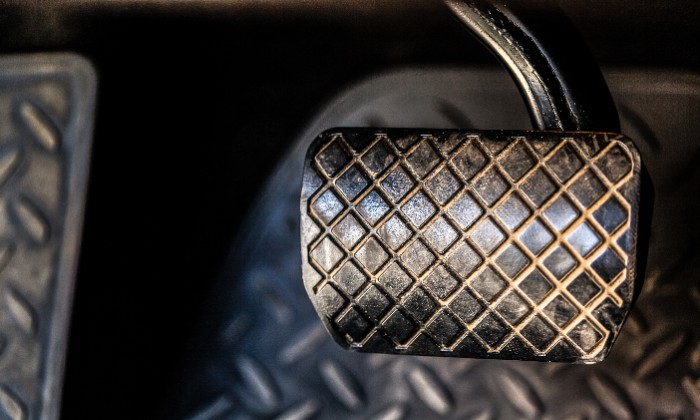For many years, there have been reports of vehicle collisions resulting from ‘unintended acceleration’. These incidents affect vehicles with an automatic transmission, or equivalent non-manual transmissions, and occur when the driver mistakenly presses the accelerator pedal, believing that they are actually pressing the brake pedal. In this scenario, rather than the vehicle decelerating or being held stationary, the vehicle actually accelerates, and the situation is further exacerbated when the driver applies further pressure to the accelerator pedal, still believing that they are actually pressing the brake pedal.
With the greater proliferation of vehicles fitted with an automatic transmission or a continuously variable transmission (CVT), and the increase in the number of hybrid vehicles and pure electric vehicles in recent years, the number of such ‘unintended acceleration’ incidents has been increasing. Therefore, some vehicle manufacturers have begun introducing systems to prevent or mitigate the consequences of such ‘unintended acceleration’ incidents.
Due to the fact that there were no United Nations Economic Commission for Europe (UN ECE) Regulations covering systems intended to prevent or mitigate the consequences of ‘unintended acceleration’ incidents, in early 2023, the UN ECE Working Party on Automated/Autonomous and Connected Vehicles (GRVA) set up a specific Informal Working Group on Acceleration Control for Pedal Error (ACPE) to develop a new UN ECE Regulation on ACPE which would specify uniform provisions and performance requirements for such systems that were technology neutral. Between March 2023 and May 2024, this Informal Working Group met eight times, and their work resulted in the development, and subsequent adoption by the World Forum for Harmonisation of Vehicle Regulations (WP.29), of a new UN ECE Regulation, Regulation No. 175, which came into force on May 12, 2025.
This new Regulation is applicable to Acceleration Control for Pedal Error (ACPE) systems fitted to M1 category vehicles, i.e. passenger cars and multipurpose passenger vehicles. However, meetings of the Informal Working Group on ACPE are continuing with a view to expanding the scope of the Regulation to include other vehicle categories.
Within the Regulation, ACPE systems are defined as systems 'to detect misapplication of the accelerator control by the driver and to control unintended acceleration'. In essence, the new Regulation requires that the APCE system must operate when the vehicle is stationary and the vehicle’s transmission has been placed in either a forward or rearward driving mode. Under these conditions, if the APCE systems identifies ‘rapid’ application of the accelerator control and identifies an obstruction, such as another vehicle or a wall like structure within 1.5m of the vehicle in its intended direction of travel, the system must limit vehicle acceleration to prevent or mitigate a collision with the obstruction.
In addition to specifying both design and performance requirements that the APCE systems must comply with and detailed test procedures to which an APCE equipped vehicle must be subjected to demonstrate compliance with those requirements, the Regulation also includes specific requirements on the following:
- System deactivation - Specifying provisions to apply if the system is capable of being manually deactivated by the driver, and provisions to apply if the system is capable of being automatically deactivated, e.g. when carrying a bicycle rack or towing a trailer.
- Failure warning - Requiring the APCE system to have an integral self-checking capability and specifying how a failure in the APCE system must be notified to the driver.
- Warning signals - Specifying the warning signals to be provided to the driver when there is an APCE system ‘intervention’.
- Safety concept - Specifying the documentation that must be compiled and submitted by the vehicle manufacturer to describe the technical details of the system and its operation, and the measures incorporated into the design of the system to ensure its safe operation in all use conditions, including in both fault and non-fault conditions.
